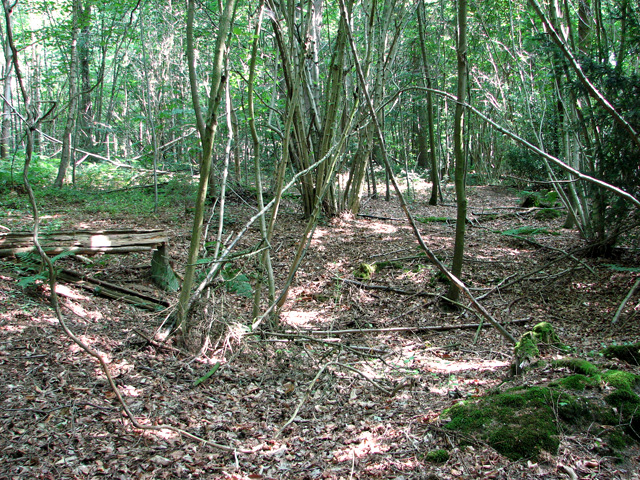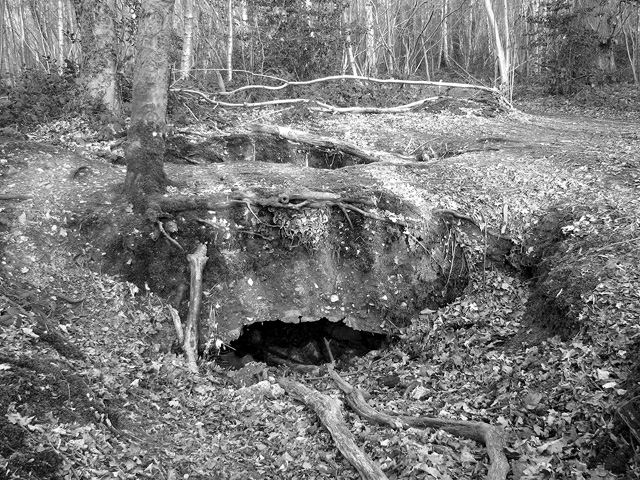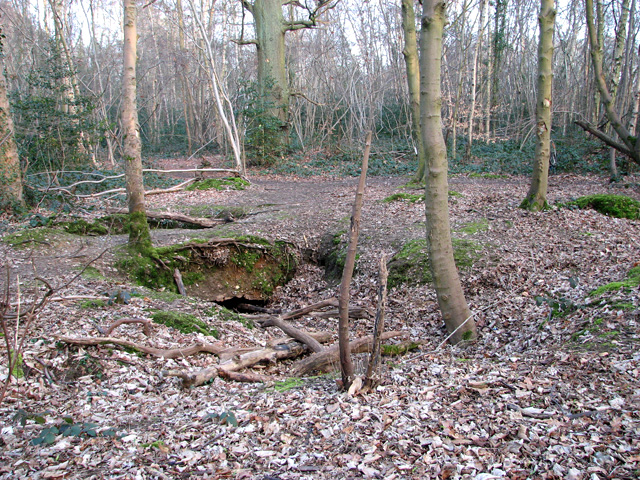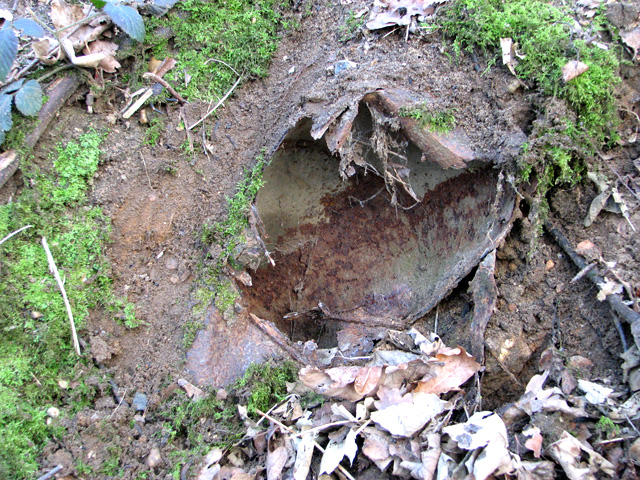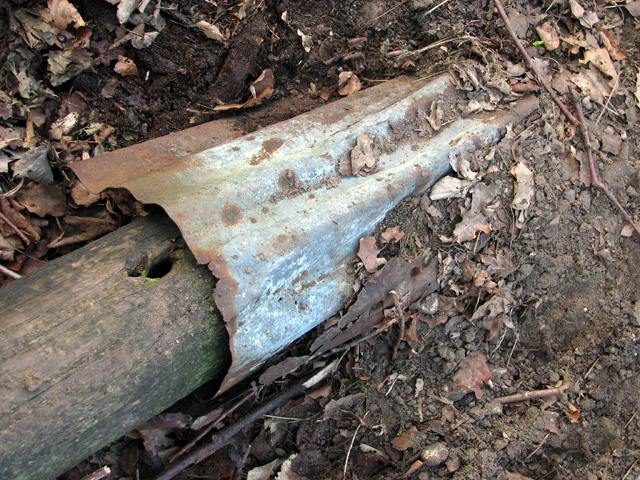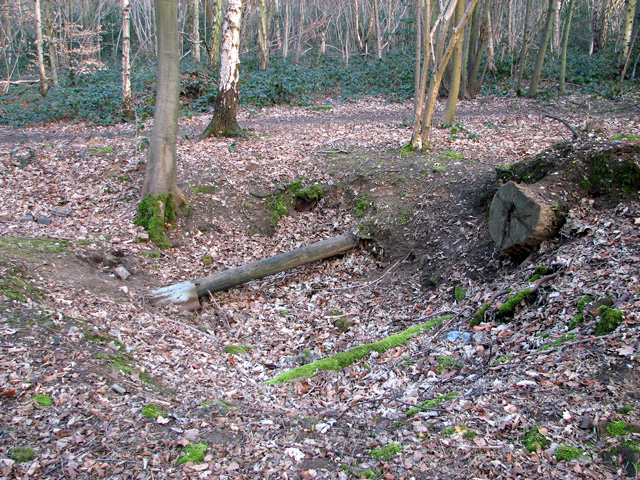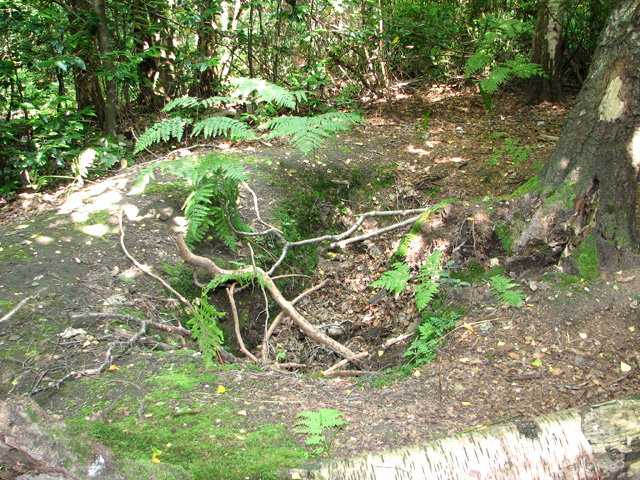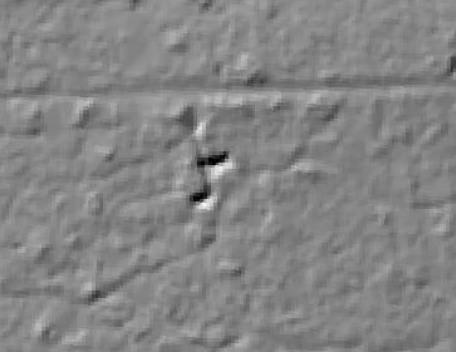Sprowston is an area in Norwich 2 miles north-east of the city centre.
| Name | Occupation | Posted from | Until |
|---|---|---|---|
| Sergeant Robert Leslie Wright | Telephone & telegraph fitter for GPO |
Unknown | 03 Dec 1944 |
| Lance Corporal Jack Allen Ridgway | Electrical engineer apprentice |
Unknown | 03 Dec 1944 |
| Corporal Jack Dennis Thorne | Electrical fitter apprentice |
Unknown | 03 Dec 1944 |
| Private Basil John Ramsay Anderson | Student (1939) |
Unknown | 03 Dec 1944 |
| Private Herbert Philip Bowman | Apprentice |
Unknown | 03 Dec 1944 |
| Private Ronald Archibald Dungar | Student (1939) |
Unknown | Unknown |
| Private Ernest Richard Higgs | Commercial traveller (Tobacco) |
Unknown | 03 Dec 1944 |
| Private Harold William Parker | Motor accessory stores assistant |
Unknown | Unknown |
| Private James Edward Smith | Student (1939) |
Unknown | 03 Dec 1944 |
| Private Fred Taylor | Unknown | 03 Dec 1944 |
The OB is situated in a privately owned woodland with public access. RAF aerial pictures taken in 1946 reveal that although the wood extends across roughly the same area that it covers today, the only mature trees were growing in its south-western corner, on the edge of which the OB is located. The 1940's O.S map denotes it as mixed woodland comprising conifers and broad-leafed trees.
The OB site presents itself as three pronounced depressions in the ground. The smallest of these was caused by the collapse of the drop-down entrance shaft at the eastern end of the main chamber which is an elephant shelter. A section of roof is still in place, supported by the end wall, forming a cave-like shelter underneath which has been partially filled in with rubble in order to prevent access for local children who used to play there. The remaining roof has collapsed, forming a second, larger, roughly square-shaped depression. A narrow path leads right across the section of roof that is still in situ.
A passageway, now collapsed, lead at right angles from the western end of the main chamber to the ammo store, located approximately 25 foot further south and to the emergency exit, approximately 30 foot further to the north. A lot of the bricks retain some green paint and there seems to have been a paver floor to it. There also seems to be evidence of some sort or tar, presumably to seal from water ingress. The emergency exit is collapsed. The course of the passageway is denoted by a marked linear depression.
The collapse of the ammo store’s roof has created a third depression, measuring approximately 9 by 6 feet. The ammo store, which was connected to the OB by a tunnel, now also collapsed, had a flat roof supported by lengths of telegraph poles (two still in situ) resting on wooden uprights (in situ) and covered by corrugated sheeting (small sections still in situ). What appears to be a homemade ventilation pipe emerges from one corner.
An interesting account given by Mr Neil Evans, a local resident was published by Chris Bird (in: Silent Sentinels, 1999):
“The Norwich base, in Belmore Plantation, off South Hill Road, had three rooms, connected by a long passageways. There were two entrance hatches. The complex was just below ground level, covered with soil and pine needles. To give ventilation, some pine trees were cut down to their stumps, which were then hollowed out. Mr Evans stumbled across the Norwich base in 1946, finding some hand grenades inside, about which he notified the police.”
An article published in the Norwich Evening News (30 June 2011) informs that “local resident Neil Evans took the group (a group of ‘Save Thorpe Woodlands’ campaigners) to two large craters in the wood. He explained how they were underground bunkers for the secret army during the Second World War that he and friends had discovered in their youth but were dismantled in secret by people sworn to the Official Secrets Act”.
According to Patrol member H P Bowman (in: A Hoare), the OB was built by regular army engineers and measured 12 by 8 feet.
The Defence of Britain Database has the following information: “Underground hide. Two entrances. Three rooms with long connecting tunnels. Ventilation through hollow tree stumps. [Positional reference from Mr. J. Fielding, former Norfolk auxiliary]. (Source: Oral Account ). Recorder: William Ward.
The OB site has also been recorded by Norfolk Heritage: “The site of a former Second World War Auxiliary Units underground hide was allegedly located within Belmore Plantation off Plumstead Road East at the eastern outskirts of Thorpe St. Andrew. According to an oral source the hide featured two entrances, three rooms with long connecting tunnels and a ventilation system through hollow tree stumps. In 2006 the condition of the underground hide was uncertain and it was not visible on aerial photographs of the area.” E. Bales (NMP), 10 November 2008.
What both recorders appear to have missed is the site of an Observation Post that was situated about 175 metres to the north-west of the OB site, not far from the edge of a pond. All that remains of the OP site is a rectangular dugout.
Sprowston Patrol
Local targets would have included Rackheath airfield. A training exercise involved the Patrol getting through security and "blowing up" the planes.
Locally the Patrol trained at Whitlingham sandpits, Cawston Heath rifle range and at Leicester Square Farm, Syderstone often under live fire.
Training also took place at South Creake and occasionally in the OB. Unarmed combat was taught in a field behind Norwich School.
Once a week the would meet at the Veterans Club in Princes Street to discuss future plans.
Weapons included Sten or Thompson submachine guns, Fairbairn-Sykes fighting knives and .38 revolvers plus a variety of explosives including hand grenades, detonators and fuses would have been standard issue. (Info from H P Bowman, Patrol member in A Hoare)
Sergeant Wright's son recalled his father had a .38 calibre Colt Police revolver and a Sten gun which he kept in the cupboard. After the war he tried to dispose of the weapons but, as there was no record of Auxiliary Units, the Britannia Barracks in Norwich refused to accept them. Eventually he put them in a tea chest and sent them to the Home Office anonymously and without a return address.
The Patrol travelled to the Isle of Wight in the weeks before D-Day to assist in the defence.
TNA ref WO199/3389
Hancock data held at B.R.A
Evelyn Simak and Adrian Pye
Kiel Almond
A Hoare, Standing up to Hitler (2002),
Norfolk Heritage Explorer (NHER number 51911*), Defence of Britain (Dr William Ward);
Lorna Beckett, Thorpe St Andrew;
RN Evans, Thorpe St Andrew;
Norwich Evening News (30 June 2011); Chris Bird (Silent Sentinels, 1999); Peter Wright Daily Telegraph 13 Jan 2021
